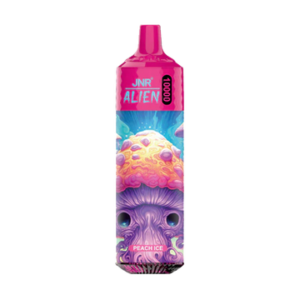Step-by-Step MSD Assay Guide for Reliable Lab Results
MSD Assay
Meso scale discovery (MSD) assay is a technology that allows scientists to develop singleplex or multiplex assays rapidly using their in-house or commercially available antibodies. This technology is particularly beneficial for researchers aiming to design tailored multiplex assays or transform ELISA or other ligand binding assays to MSD assays. The MSD mesoscale is comparable to traditional ELISA, except that MSD uses chemiluminescence instead of the colorimetric detection technique used by the latter. The chemiluminescence detection offers multiple advantages, such as improved sensitivity, better dynamic range, reduced matrix effects, multiplexing ability, scale-up capability, reduced sample requirement, and enhanced efficiency.
A wide range of MSD analysis kits are commercially available, including MSD cytokine assays, MSD immunoassays, serology assays, pharmacokinetics assays, biomarker assays, and cell binding assays. These kits make MSD mesoscale a rapid and convenient method for quantifying targets with a small sample volume.
MSD Assay Guide
MSD mesoscale discovery assay uses chemiluminescent SULFO-TAG conjugated to the detection antibodies. The emission of the SULFO-TAG moieties enables ultra-sensitive detection.
Next, we will look at the step-by-step procedure of MSD assay.
Let us, for example, consider the MSD assay of proinflammatory cytokines in supernatant collected from T cell-dependent cytotoxicity cultures. A plate pre-coated with Human Proinflammatory-4 (available commercially) is taken, and a blocker solution is added to each well. Thereafter, the plate is sealed and placed in a shaking incubator (shaking at about 500-800 rpm) for 1 hour at room temperature. The plate is washed thrice with PBST buffer (wash buffer, PBS + 0.05% Tween 20) using a plate washer. The washed plate is dried using a paper towel, and the sample (or calibration standard, as needed) is added to the appropriate wells on the plate. The plate is sealed again and incubated in a shaking incubator (shaking at about 500-800 rpm) for 2 hours at room temperature.
Thereafter, the detection antibody solution is prepared just before its use. The 50X solution of the detection antibody is diluted to a 1X concentration in diluent 100 (containing blocking and stabilizing agents). This solution is stored in the dark until further use. The MSD plate is removed from the incubator and washed thrice with PBST buffer. Approximately 25 µL of detection antibody is pipetted in each well of the plate. The plate is sealed, covered with aluminum foil, and placed in the shaking incubator for 2 hours at room temperature. The plates are washed thrice with PBST buffer. Using deionized water, a 2X read buffer solution is prepared from the 4X read buffer solution. 150 µL of read buffer is added to each well, ensuring no air bubbles are present. The plate is now ready to be read on an MSD instrument. The results obtained are analyzed (e.g., Cytokine Analysis) using MSD software.
Researchers can customize MSD assays for diverse applications. Although MSD assays may vary slightly in their reagents, the basic protocol is the same since they employ a sandwich method, where the target analyte is sandwiched between the capture antibody (coated on the plate) and the SULFO-TAG labeled detection antibody.
Tips for Successful MSD Assay
After discussing the MSD assay protocol, this section will list a few tips to help improve the MSD mesoscale outcome.
In MSD assays, the plates should shake during incubation. Shaking assay plates accelerates the diffusion kinetics, which facilitates the binding process. Thus, upon shaking, the binding equilibrium is achieved quickly. However, it is crucial to maintain uniform shaking, which helps reduce the variability of assay results.
2X read buffer is recommended for MSD assay; at this concentration, the background noise is low, helping reduce the variability in the detection signal.
During chemiluminescent detection, SULFO-TAG must be measured at 455 nm instead of 280 nm since SULFO-TAG moieties show significant absorbance at the latter wavelength.
Must Read: MSD Assay Techniques for Improved Drug Discovery and Development
In analyte quantification, a titration curve (based on electro-chemiluminescent detection) is required using known standard and appropriate data fitting methods (least squares fitting algorithms). It is important to note that if the background signal is significantly high for some wells, it is possible to obtain negative counts for them. In addition to instrument noise, negative signal values may also be obtained due to omission or use of incorrect read buffer or incorrect amount of detection antibody.
Non-specific binding may also increase the background signal. Using a control without a SULFO-TAG labeled drug can help identify non-specific binding. Alternatively, performing control experiments using SULFO-TAG labeled drug in the diluent and the sample matrix can help determine whether the non-specific binding is due to the matrix or the drug. Blocking solution and diluents used in the assay should also be tested for non-specific interactions.
The pair of capture and detection antibodies, e.g., those used in MSD cytokine, should be selected appropriately so that their cross-reactivity is minimal.
While developing an MSD assay, the reagent concentrations should be optimized, and the platform sensitivity should be tested. It is advisable not to exceed the recommended amount of drug per plate.














Post Comment